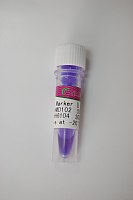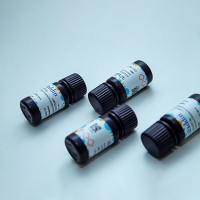DNA-protein interactions are instrumental in the replication, repair, recombination, and expression of genetic information. Their study under physiological conditions requires rapid methods that do not cause extensive cell damage. Among the available techniques, crosslinking by ultraviolet (UV) laser irradiation seems best placed to fulfill these requirements, but the crosslinking yield is still relatively low with the commonly used pulses in the nanosecond (ns) range (see Chapter 27 ). To attain higher crosslinking yields, laser parameters must be adjusted to the underlying two-photon process, which strongly depends on pulse intensity and pulse length (1 ). The highest crosslink yields are achieved using femtosecond (fs) laser pulses, but these also result in higher DNA damage (1 ). In order to reduce the UV-induced DNA damage, we have applied a combination of UV pulses for the first excitation step and blue pulses for the second step (2 ). This strategy has the advantage that the intensity of the UV pulse in the first step can be kept low, thus reducing DNA damage caused by the UV photons. High crosslinking efficiency can, however, still be attained by applying the second pulse with a very short time delay and at a visible wavelength too long to excite DNA bases from the ground state. This second pulse cannot alone damage DNA, but it can provide enough additional energy for the UV excited bases to pass their ionization threshold, leading to crosslinking.






